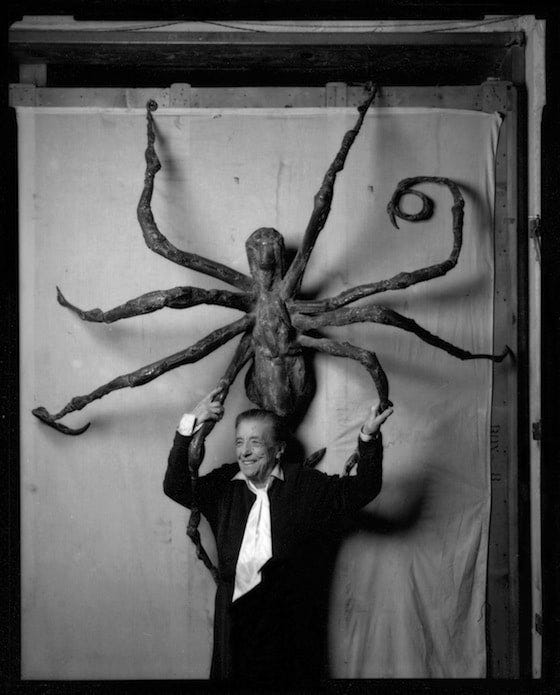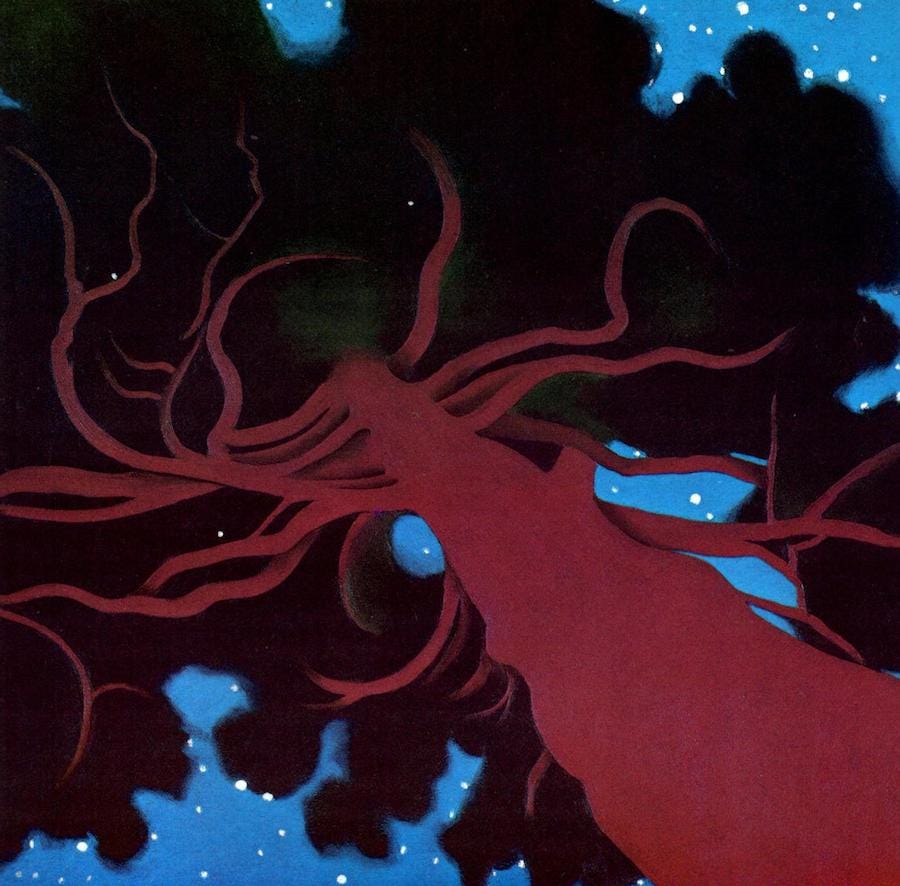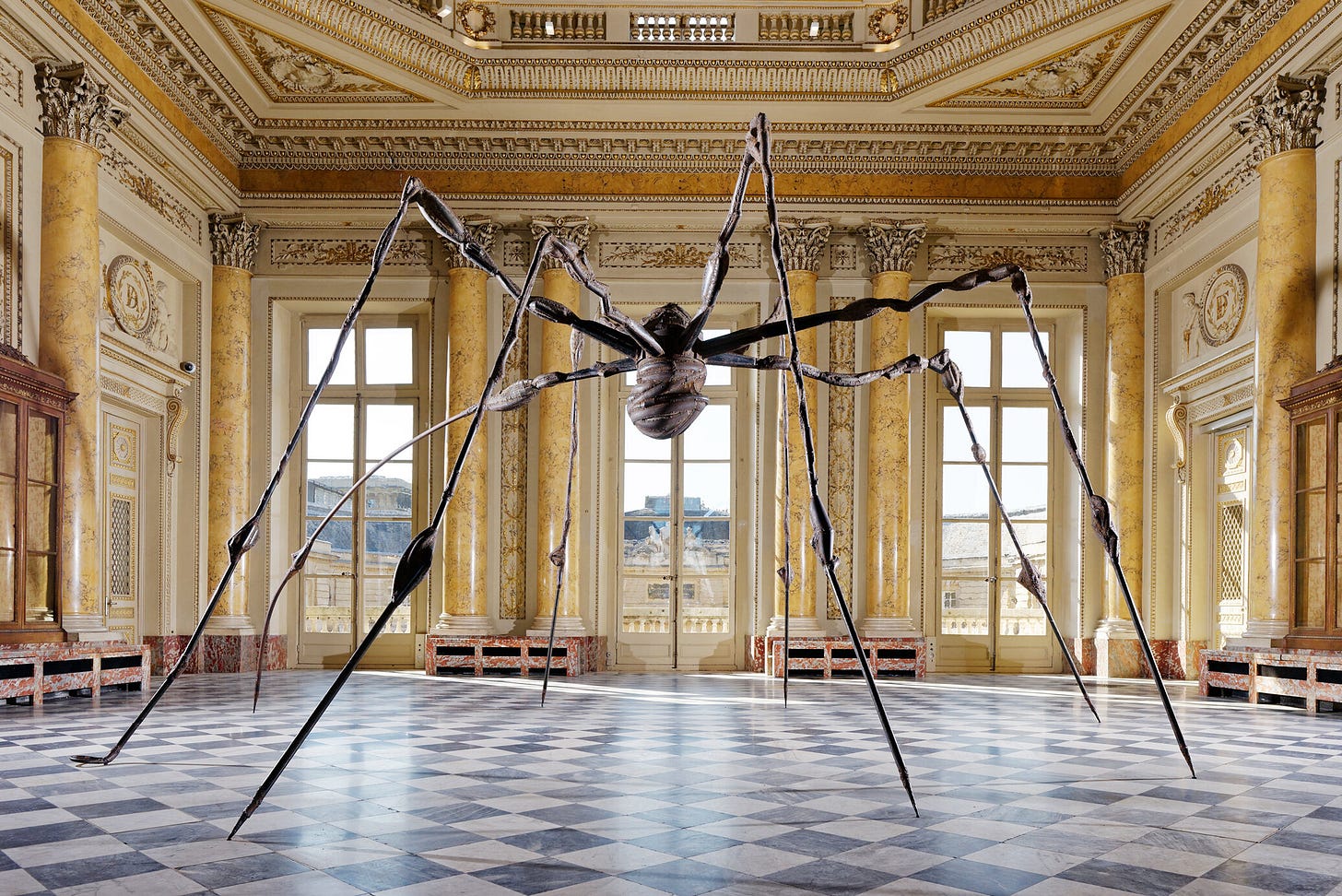Finding the Mother Tree
on the matriarchal energy of Mother Trees and Louise Bourgeois' spiders
The spider—why the spider? Because
my best friend was my mother and she
was deliberate, clever, patient, soothing,
reasonable, dainty, subtle, indispensable,
neat, and as useful as a spider.”
—Louise Bourgeois
Artist Louise Bourgeois & one of her many spiders
There are two trees in southern Vermont I’ve always felt drawn to - for the last 14 years. I can’t say exactly why. One has turned into a smooth, vulnerable snag at the edge of a field. The other, which has resided over a lake for at least a hundred years, had a bad case of witches’ broom and split in a storm.
I would go so far as to say they had matriarchal energy - something that felt calm and expansive. They were overseers - one of a small preserve, the other of a local park and lake. I have pictures of my children in both of these trees.
The Lawrence Tree, Georgia O’Keeffe, 1929
This week I read about scientist Suzanne Simard’s work regarding the interconnectivity of forests and the power of so-called “mother trees” within the network:
Within the "Wood Wide Web," Simard also found a pivotal entity within the forest ecosystem, the "Mother Tree." These significant trees, the largest within the forest, serve as central nodes for extensive subterranean mycorrhizal networks. They play a crucial role in the forest's lifecycle by infecting seedlings with fungi and supplying them with the nutrients they need to grow.
In her influential book, Finding the Mother Tree, Simard articulates that trees have been communicating through this underground network for 500 million years. They share information through the fungi exchanging nutrients by sending hormonal, chemical, and electrical signals and connecting their roots.
Isn’t it amazing to think of the conversations going on all around us that we can’t hear or see? Mycorrhizal messages passing underground, sugars shooting through root systems, or critical fungi riding in on a seedling? (obviously I have been on an Interconnectivity Kick.)
This concept also reminded me of Louise Bourgeois’s fascination with spiders and their matriarchal energy - and the way they might protect one from harm.
From the 1940s into the 2000s, Bourgeois played with the spider motif - though it is her large scale bronze spider titled Maman that moves me most. At 30 feet high, the spider casts an enormous shadow. It lurks and hovers over the landscape, evoking both power and - in the words of the Guggenheim folks - “a poignant vulnerability.”
I am thinking about the looming, protective energy of the mother tree and the 30 foot spider Maman. And all that mother-figures nurture in others while managing their own pain - the warnings they give, the way they stand in the wings waiting to offer care when we most need it. The glue, the web, the conduit of care.
Now I walk through forests and wonder - which one is the mother tree? I think this line of vision works practically in a forest, and also in our lives - who is dispensing wisdom and care, and are we properly attuned to receive it?
Learn more about the Mother Tree Project here.




